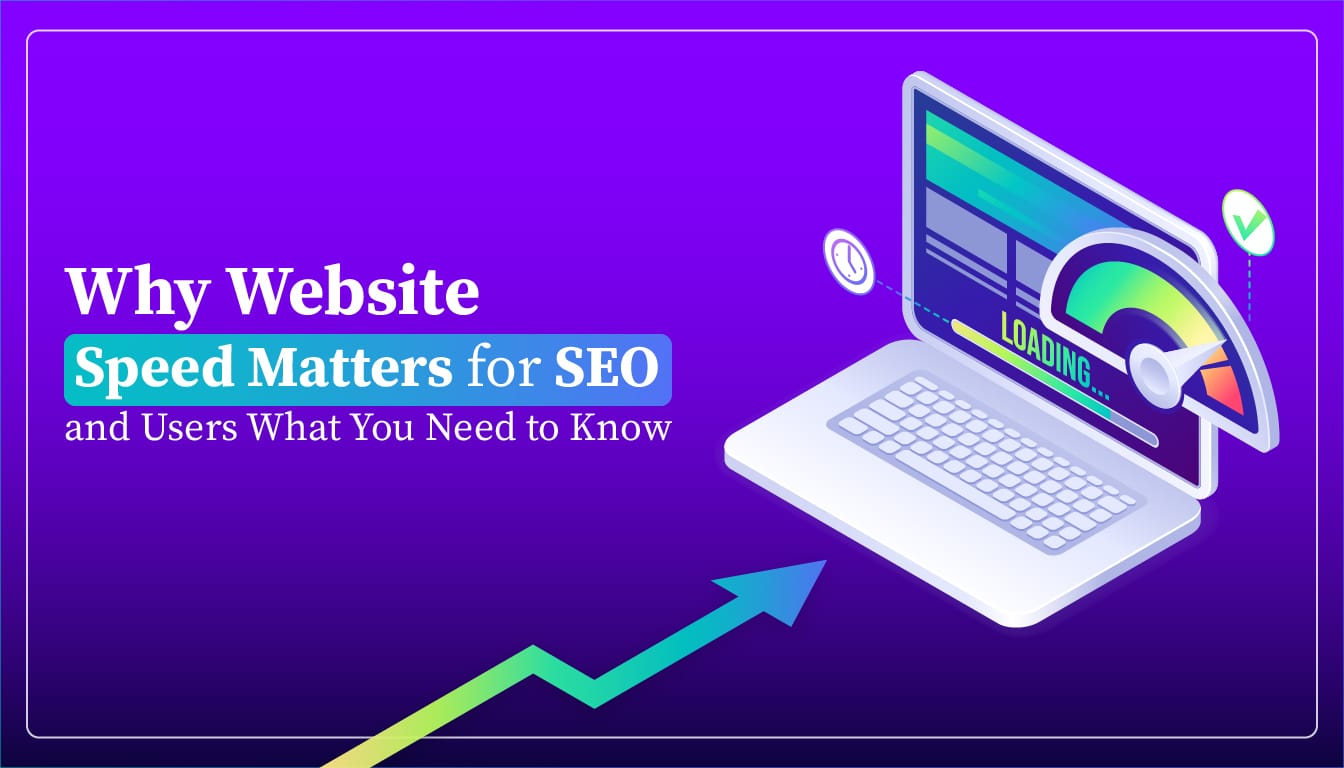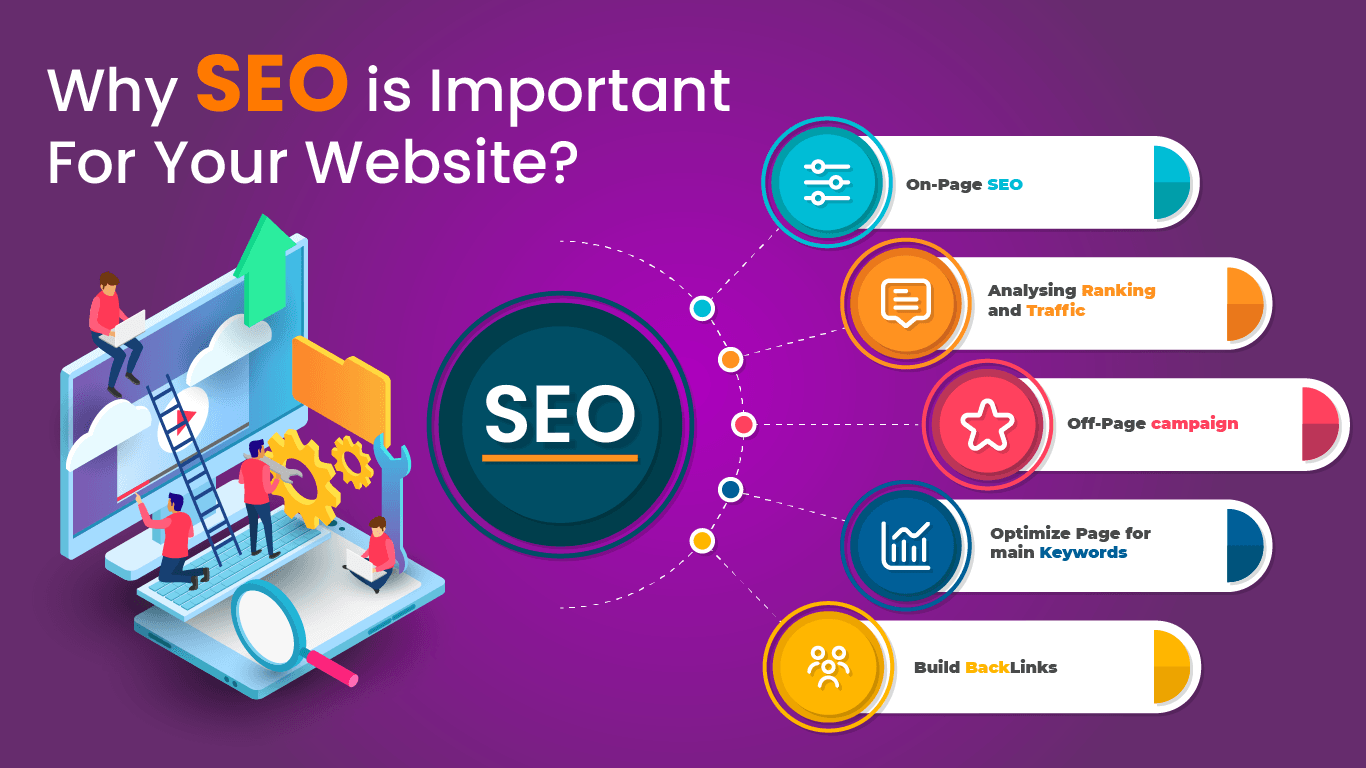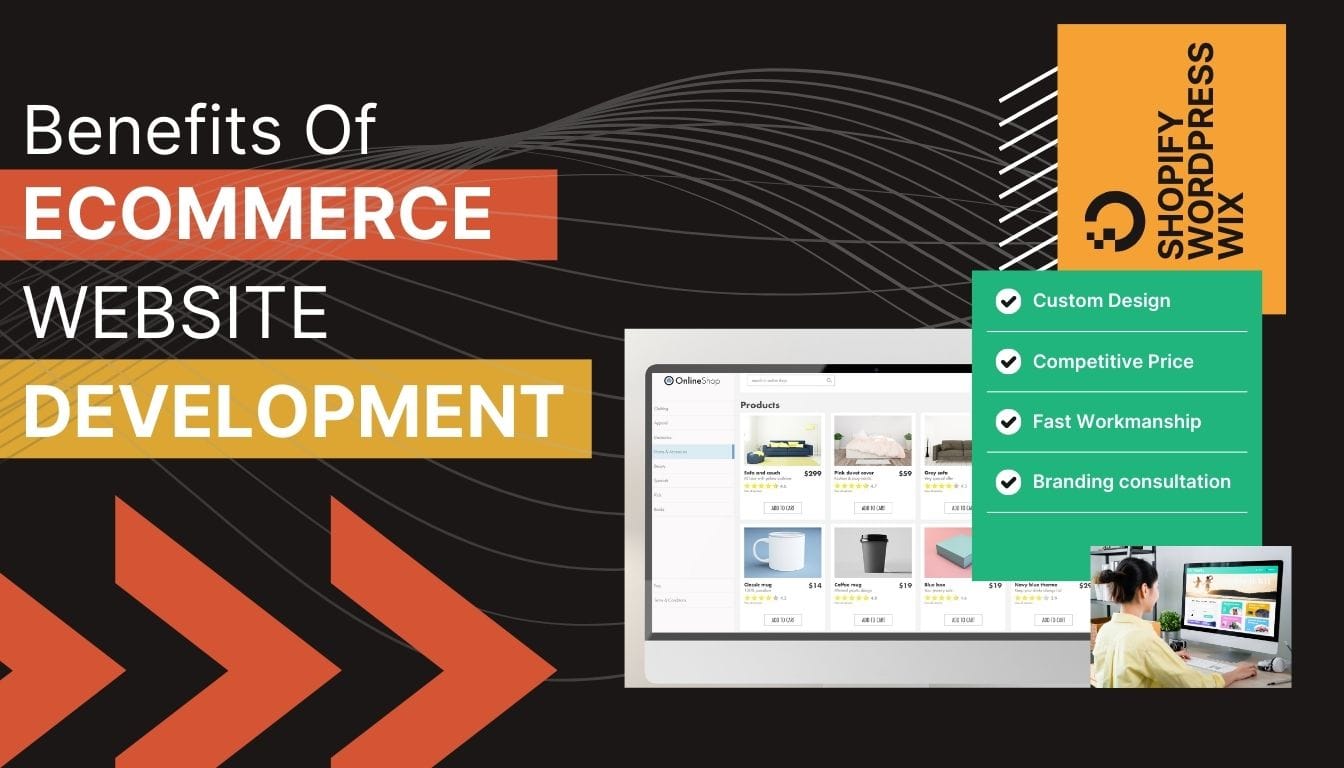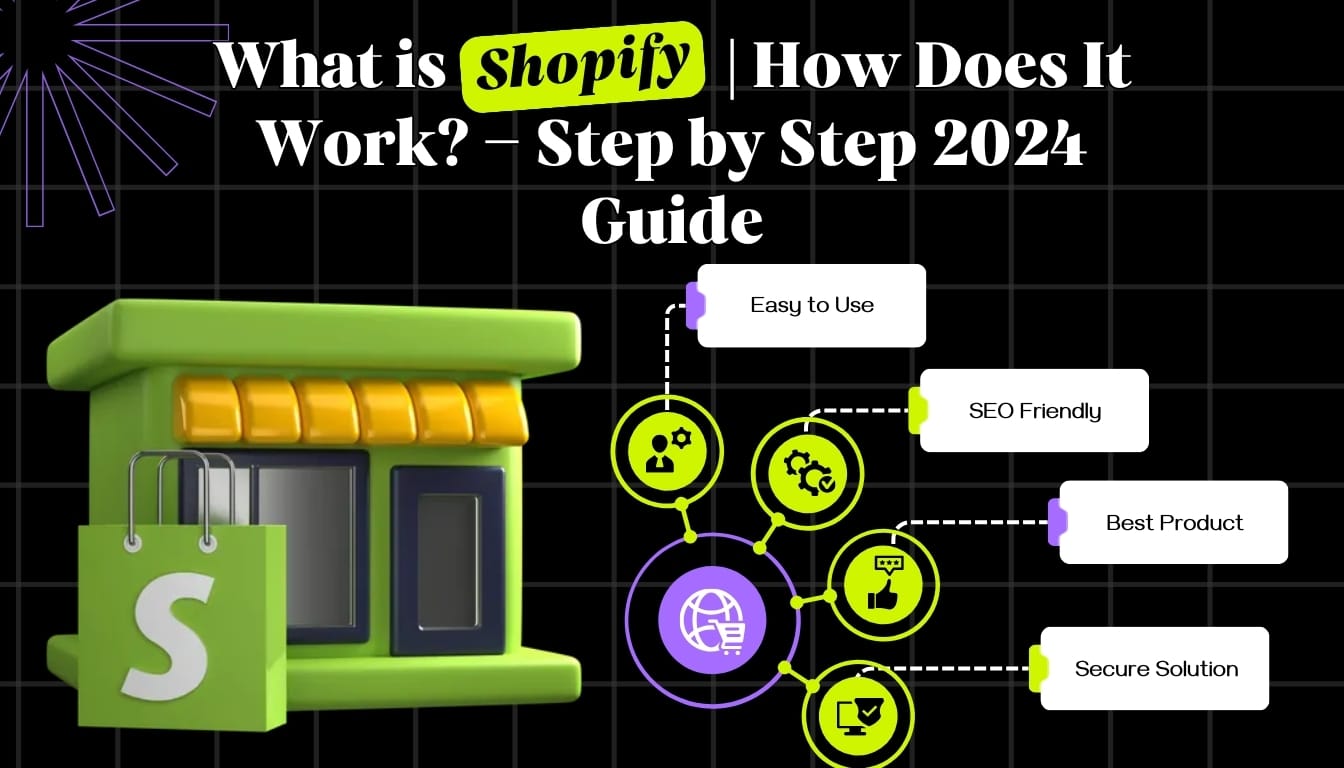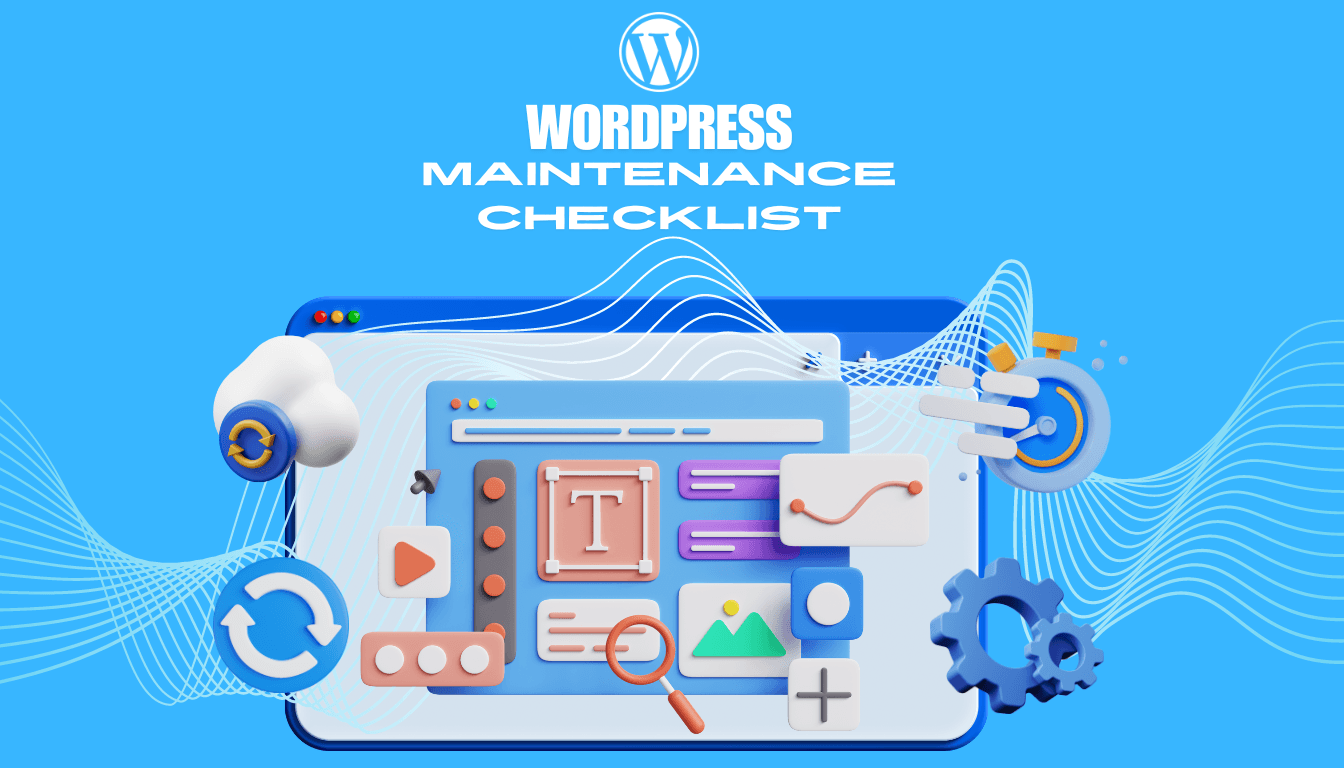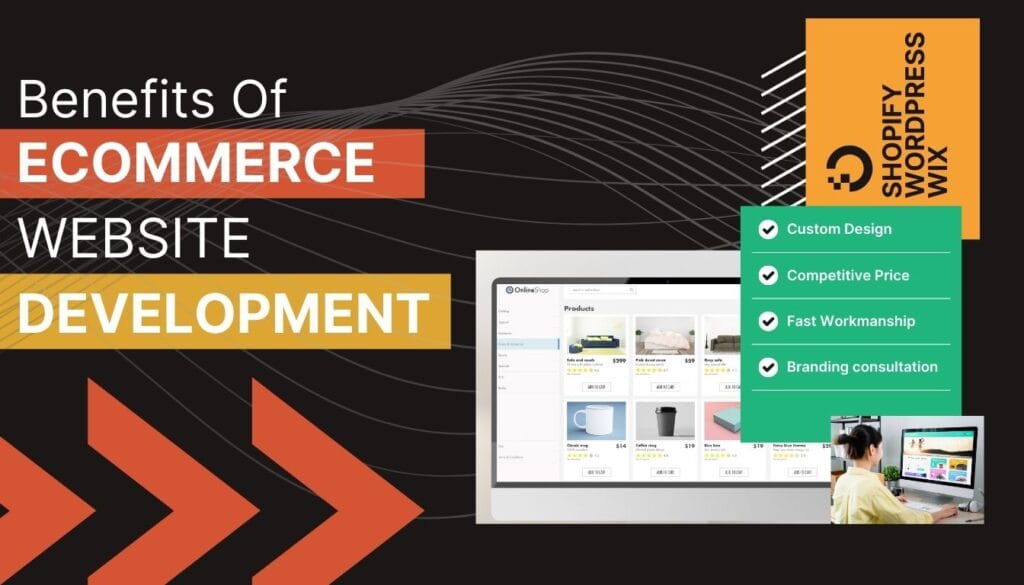
In today’s digital age, ecommerce website design and development has revolutionized how businesses operate, transforming the traditional retail landscape. As consumers increasingly turn to online shopping, having a strong online presence cannot be overstated. Ecommerce website development has become a crucial strategy for businesses to thrive and succeed in the competitive marketplace. In this blog, we delve into the numerous benefits of investing in ecommerce website development and how it can put your business to new heights of success.
Ecommerce Website Design and Development
When designing an effective ecommerce website, several key factors contribute to its success in attracting customers, encouraging conversions, and providing an enjoyable shopping experience. Here are some essential ecommerce website design tips to consider:
1. Intuitive Navigation
Ensure your website has a clear and user-friendly navigation structure. Organize product categories logically and include a prominent search bar to help users find what they want. Use intuitive labels and provide breadcrumb navigation to help visitors understand the location within the site.
2. Responsive Design
With the use of mobile devices for online shopping, it’s crucial to have a responsive website design that adapts to different screen sizes. Optimize website for mobile devices to provide a seamless experience for users on smartphones and tablets.
3. Clear Call-to-Action (CTA) Buttons
Use clear and visually appealing call-to-action buttons to guide users through buying. For example, make your “Add to Cart” and “Checkout” buttons prominent and easily recognizable. Use contrasting colors and persuasive language to encourage conversions.
4. High-Quality Product Images
Invest in high-quality product images that accurately represent your products. Include multiple product images from different angles and provide zoom functionality to allow users to examine the details. Images that showcase products being used or in context can also help customers visualize their potential purchase.
5. Streamlined Checkout Process
Simplify the checkout process to minimize cart abandonment. Offer a guest checkout option for users who want to avoid creating an account. Use progress indicators to show customers how many steps are remaining. Include a summary of the order, clear pricing, and multiple payment options to instil trust and convenience.
6. Trust Signals and Reviews
Display trust signals such as security badges, customer testimonials, and reviews to build trust with potential buyers. Highlight positive reviews and ratings to assure customers of the reliability of your products.
7. Clear Product Descriptions and Details
Provide detailed and accurate product descriptions, including essential information such as dimensions, materials, features, and specifications. Clear product descriptions help users make informed purchasing decisions and reduce the likelihood of returns.
8. Fast Page Load Speed
Optimize your website’s performance to ensure fast page load speeds. Slow-loading pages can lead to user frustration and abandonment. Instead, compress images, minify code, and leverage caching techniques to improve speed and create a seamless browsing experience.
9. Simplified Search and Filtering
Implement advanced functionality that allows users to search by product name, category, brand, or other relevant attributes. In addition, it provides filtering options to help users narrow search results based on price range, size, color, and other relevant criteria.
10. Consistent Branding
Maintain consistent branding throughout your ecommerce website, including using your logo, colors, and typography. A consistent brand identity helps create a cohesive and professional appearance, enhancing the user experience.
Ecommerce Website Design for Small Businesses
Designing an ecommerce website for a small business requires a strategic approach that maximizes effectiveness while considering limited resources. Here are some tips specifically tailored for small business ecommerce website design:
1. Clean and Simple Design
Opt for a clean and minimalistic design that focuses on the essentials. Use a simple color palette and typography that aligns with your brand identity. Avoid clutter and excessive visual elements that can distract users.
2. User-Friendly Layout
Create a user-friendly layout that makes it easy for customers to navigate and find products. Keep important elements, such as the search bar, shopping cart, and contact information, visible and accessible. Prioritize simplicity and clear navigation paths.
3. Mobile Optimization
Optimize mobile device websites since many customers shop on their smartphones or tablets. Ensure the website is responsive and provides a seamless experience across different screen sizes.
4. Showcase Key Products or Services
Highlight your best-selling or unique products on your website’s homepage or in prominent areas. This helps draw attention and entice visitors to explore further.
5. Clear Product Organization
Organize products into categories and subcategories that make sense to your target audience. Use intuitive labels and logical hierarchy to assist users in finding what they need quickly.
6. High-Quality Product Images
Invest in high-quality product images accurately represent your offerings. Showcase multiple images from different angles and provide zoom functionality for users to inspect the details.
7. Prominent Call-to-Action (CTA) Buttons
Use clear and visually appealing CTA buttons to guide users toward desired actions. Ensure that “Add to Cart,” “Buy Now,” and other key buttons stand out and are easily recognizable.
8. Trust Elements
Build trust with potential customers by displaying trust signals, such as customer testimonials, and reviews. Include contact information and a dedicated page highlighting your company’s story and values.
9. Simplified Checkout Process
Streamline the checkout process to reduce friction and increase conversion rates. Minimize the required steps, provide clear instructions, and offer guest checkout options to cater to customers who prefer to avoid creating an account.
10. Integration with Payment and Shipping Providers
Integrate reliable payment gateways and shipping providers to offer convenient options for customers. Provide transparency in shipping costs and delivery times to avoid surprises during checkout.
11. SEO Optimization
Implement basic search engine optimization (SEO) practices to improve your website’s visibility in search engine results. Optimize page titles, meta descriptions, and product descriptions with relevant keywords to enhance discoverability.
12. Social Media Integration
Integrate social media buttons or links to encourage customers to follow and share your business on platforms like Facebook, Instagram, or Pinterest. This helps extend your brand reach and generate potential leads.
Remember, as a small business, we focus on providing customers with a seamless and personalized experience. Regularly monitor website performance, gather customer feedback, and make iterative improvements to enhance user satisfaction and drive sales.
Remember, the goal is to create an intuitive, visually appealing, and trustworthy ecommerce website that delivers a good shopping experience for your customers. Regularly analyze user behavior, collect feedback, and make iterative improvements to optimize your website for conversions and customer satisfaction.
Benefits of Ecommerce Website Development
For benefits of ecommerce website development, keep reading!
1.Global Reach and Expanded Customer Base
One of the key benefits of ecommerce website development is the ability to reach customers globally. Unlike brick-and-mortar stores with geographical limitations, an ecommerce website enables businesses to transcend borders and tap into a vast customer base. With the right marketing strategies, businesses can attract customers from different countries and regions, expanding their reach and boosting sales opportunities.
2. 24/7 Availability and Convenience
An ecommerce website operates around the clock, providing customers the advantage of shopping at any time. With busy schedules and changing lifestyles, consumers appreciate the ability to browse and make purchases at their convenience. In addition, ecommerce websites eliminate the limitations of physical store hours, allowing businesses to generate sales even during non-traditional hours.
3. Increased Sales and Revenue
With an ecommerce website, businesses can capitalize on impulse purchases and encourage repeat business. The ease of online shopping, personalized recommendations, and targeted marketing campaigns can significantly increase sales conversions. Additionally, ecommerce websites enable businesses to diversify revenue streams by offering various products, upselling and cross-selling opportunities, and implementing effective pricing strategies.
4. Cost Efficiency and Scalability
Compared to maintaining a physical store, ecommerce website development offers cost advantages. Setting up an online store typically involves lower startup and operational costs, such as reduced rent, utilities, and staffing expenses. Ecommerce platforms also provide scalability, allowing businesses to expand their product offerings, reach more customers, and adapt to market demands with relative ease and minimal additional costs.
5. Enhanced Customer Experience and Personalization
Ecommerce websites provide valuable insights into customer behavior, preferences, and purchase history. Leveraging this data allows businesses to deliver personalized experiences, recommendations, and targeted marketing campaigns. As a result, businesses can foster customer loyalty, increase engagement, and provide a seamless and enjoyable shopping experience by tailoring product suggestions and offers to individual customers.
6. Streamlined Inventory Management and Order Processing
Ecommerce platforms offer robust inventory management systems, simplifying tracking and organizing product inventory. Automated inventory updates ensure accurate stock levels, reducing the risk of overselling or disappointing customers. Moreover, with integrated payment gateways and automated order fulfillment, order processing becomes more efficient, minimizing manual intervention and streamlining operations.
7. Data Analytics and Insights
Ecommerce website development provides businesses with valuable data and analytics to gain insights of customer behavior, sales trends, and marketing effectiveness. By analyzing this data, businesses can make data-driven decisions, optimize marketing strategies, identify areas for improvement, and refine their overall business approach. Such insights enable continuous growth and a better understanding of customer preferences.
Conclusion
Investing in ecommerce website design and development offers many benefits for businesses to thrive in the digital era. From global reach and increased sales to cost efficiency and enhanced customer experiences, eCommerce platforms empower businesses to adapt, grow, and stay competitive in an ever-evolving marketplace. Embrace the power of eCommerce with Tech Sispn and unlock the potential for success as you connect with customers worldwide, drive revenue, and create seamless and personalized shopping experiences.

